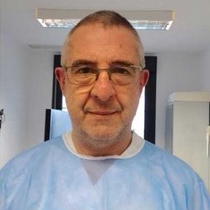Advances in the Therapeutics of Neurological Diseases
A special issue of Journal of Personalized Medicine (ISSN 2075-4426).
Deadline for manuscript submissions: closed (5 January 2022) | Viewed by 45478
Special Issue Editor
Interests: movement disorders; Parkinson’s disease; neurodegenerative diseases; restless leg syndrome; genetics; biochemistry; risk factors
Special Issues, Collections and Topics in MDPI journals
Special Issue Information
Dear Colleagues,
Neurology, as well as other branches of Medicine, is in rapid expansion, particularly in the improvement of diagnostic methods as well as the development of new therapies, including those related to personalized medicine. This Special Issue aims to summarize the most recent advances in the therapy of neurological diseases. For this purpose, I have made an initial selection of several topics of interest related to different subspecialities in the field of Neurology (headache, multiple sclerosis, epilepsy, dementia, stroke, neuromuscular disorders, movement disorders, sleep disorders, …), although proposals for other topics are welcome.
- the role of anti-CGRP monoclonal antibodies in the treatment of migraines;
- symptomatic treatment of multiple sclerosis;
- current therapeutics for the management of status epilepticus;
- advances in the therapeutics for Alzheimer’s disease;
- advances in the therapeutics for ischemic stroke;
- management of Guillain–Barre syndrome and chronic inflammatory demyelinating polyneuropathy;
- current therapeutics for the management of myasthenia gravis and myastheniform syndromes;
- advances in the therapeutics for muscular dystrophy;
- current and future treatment options for restless legs syndrome;
- neurochemistry and neuropharmacology of REM Sleep Behaviour Disorder.
Prof. Dr. Félix Javier Jiménez-Jiménez
Guest Editor
Manuscript Submission Information
Manuscripts should be submitted online at www.mdpi.com by registering and logging in to this website. Once you are registered, click here to go to the submission form. Manuscripts can be submitted until the deadline. All submissions that pass pre-check are peer-reviewed. Accepted papers will be published continuously in the journal (as soon as accepted) and will be listed together on the special issue website. Research articles, review articles as well as short communications are invited. For planned papers, a title and short abstract (about 100 words) can be sent to the Editorial Office for announcement on this website.
Submitted manuscripts should not have been published previously, nor be under consideration for publication elsewhere (except conference proceedings papers). All manuscripts are thoroughly refereed through a single-blind peer-review process. A guide for authors and other relevant information for submission of manuscripts is available on the Instructions for Authors page. Journal of Personalized Medicine is an international peer-reviewed open access monthly journal published by MDPI.
Please visit the Instructions for Authors page before submitting a manuscript. The Article Processing Charge (APC) for publication in this open access journal is 2600 CHF (Swiss Francs). Submitted papers should be well formatted and use good English. Authors may use MDPI's English editing service prior to publication or during author revisions.
Keywords
- neurological diseases
- neuropharmacology
- pharmacogenetics
- pharmacological therapy
Benefits of Publishing in a Special Issue
- Ease of navigation: Grouping papers by topic helps scholars navigate broad scope journals more efficiently.
- Greater discoverability: Special Issues support the reach and impact of scientific research. Articles in Special Issues are more discoverable and cited more frequently.
- Expansion of research network: Special Issues facilitate connections among authors, fostering scientific collaborations.
- External promotion: Articles in Special Issues are often promoted through the journal's social media, increasing their visibility.
- e-Book format: Special Issues with more than 10 articles can be published as dedicated e-books, ensuring wide and rapid dissemination.
Further information on MDPI's Special Issue polices can be found here.






